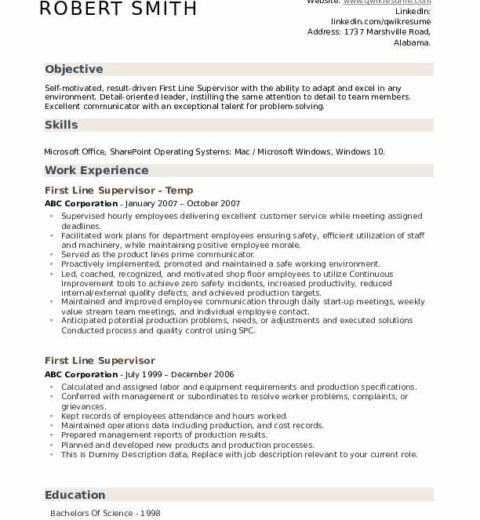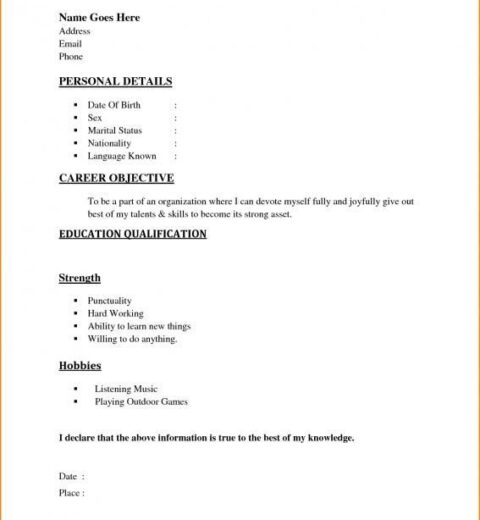When crafting a resume, one of the pivotal elements to consider is the use of bullet points. These succinct lines serve as a mechanism for effectively communicating your professional accomplishments and skills. The pressing question many candidates ponder is: “How many bullet points per job is too many?” The answer can vary, but striking a balance between brevity and comprehensiveness is essential. To delve deeper into this topic, it is prudent to examine various aspects, including the purpose of bullet points, recommended quantities, and tips for utilizing them effectively.
The Purpose of Bullet Points
Bullet points are a powerful formatting tool that enhances the readability of a resume. They distill complex information into digestible segments, allowing hiring managers to quickly absorb key details. By employing bullet points, job seekers can highlight relevant experiences, specific responsibilities, and notable achievements without overwhelming the reader with dense paragraphs. The ultimate goal is to create a resume that captures attention and conveys essential information efficiently.
Recommended Bullet Point Quantity
While there is no universally applicable number of bullet points that fits all scenarios, general industry standards and best practices can be observed. Typically, for each position listed on a resume, three to five bullet points are recommended. This consensus stems from the need to convey accomplishments succinctly while maintaining an engaging narrative. However, consider the following nuances:
- The Nature of the Role: For high-level positions, such as executive roles, two to four bullet points may suffice. In contrast, entry-level positions might require more detail, perhaps five to seven bullet points, to comprehensively reflect the breadth of responsibilities undertaken.
- Relevance: If a particular job has less relevance to the desired position, it may be advantageous to include fewer bullet points, centering instead on other roles that better showcase pertinent experience.
- Space Constraints: Given that resumes should ideally be one page, the physical space available may dictate the number of bullet points included. Prioritize quality over quantity; it is preferable to have a few well-crafted bullet points than a multitude of diluted ones.
Crafting Effective Bullet Points
Once you understand the recommended quantity, the next step involves constructing effective bullet points. This process is crucial for translating your experiences into impactful statements. Consider the following strategies:
- Use Action Verbs: Each bullet point should commence with a dynamic action verb that illustrates your contributions. Words such as “orchestrated,” “optimized,” or “executed” can provide a sense of proactivity and impact.
- Quantify Achievements: Wherever possible, integrate numbers to provide context. Statements like “increased sales by 25%” or “managed a team of 10” offer tangible evidence of your success and contributions.
- Focus on Outcomes: Beyond responsibilities, emphasize the outcomes of your actions. A bullet point such as “developed a new marketing strategy that enhanced brand visibility and drove a 15% boost in customer engagement” illustrates both the task and its result.
- Tailor Content: Customize your bullet points for each application to mirror the language found in the job description. This not only demonstrates your suitability for the position but also resonates with applicant tracking systems employed by many organizations.
Common Pitfalls to Avoid
Although bullet points are advantageous, misuse can diminish their effectiveness. Be mindful of the following mistakes:
- Excessive Length: Avoid excessively long bullet points. Aim for a maximum of two lines; anything longer risks losing the reader’s attention.
- Redundancy: Refrain from reiterating information already conveyed in other sections of the resume. Each bullet point should provide a unique insight into your capabilities.
- Lack of Diversity: Varying the structure of bullet points can add interest. Mix concise accomplishments with slightly longer descriptions to maintain reader engagement.
Conclusion: Finding the Right Balance
In the competitive landscape of job applications, bullet points serve as essential components in presenting a compelling narrative. The consensus suggests that three to five bullet points per job is an optimal range, yet this can fluctuate based on the job level, relevance, and context of the position. When crafted thoughtfully, bullet points can effectively convey experience and achievements in a format that is both engaging and easy to digest.
Ultimately, the art of crafting bullet points lies in the delicate balance between conciseness and substance. By adhering to industry standards while employing strategies to enhance the clarity and impact of each point, job seekers can significantly bolster their chances of making a favorable impression on hiring managers. Remember, the bullet points are not just a list of duties; they are a narrative of your professional journey that deserves to be told with precision.




